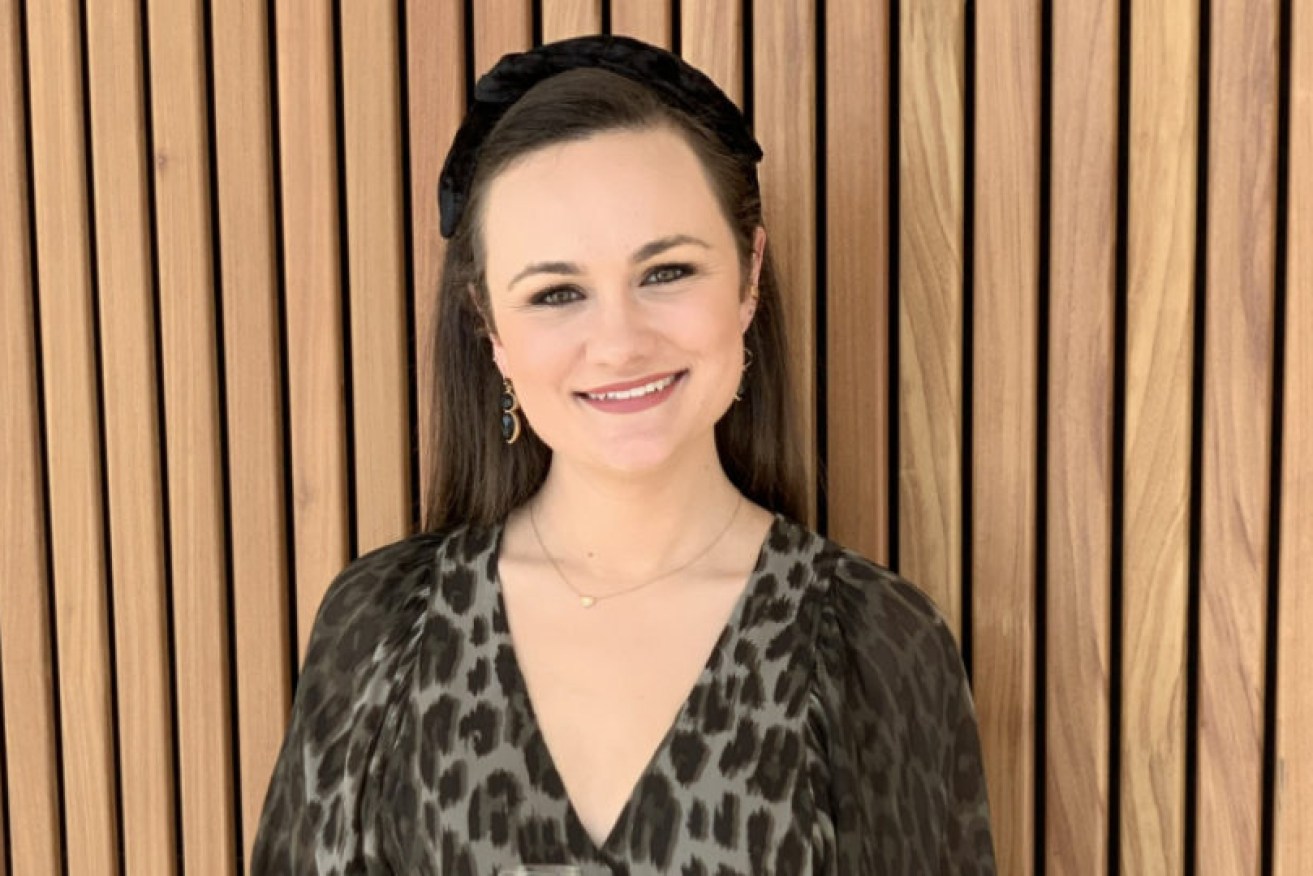Diagnosed with ovarian cancer at just 28, Jordan wants young women to know the signs


Jordan Turner was diagnosed with a rare form of ovarian cancer on the eve of her 28th birthday. Photo: Supplied
The day before her 28th birthday, Jordan Turner was diagnosed with ovarian cancer. The first sign, possibly, was a case of shingles – a serious disease caused by a reactivation of the chickenpox virus.
It causes a painful blistering rash and escalate to severe nerve pain that can last for months. From this, Jordan suffered ongoing complications from codeine-based pain killers.
“After that, I didn’t feel right, but I thought it would just get better,” she says. “Later, I found out that it can be an early sign of malignancy.”
A disease of misdirection
This was really the beginning of emerging symptoms acting like a smokescreen – where cancer isn’t an obvious consideration, while it was taking hold of the body.
Then came months of bloating, which Jordan – and her GP – took to be an every-day consequence of being a woman.
“I just thought it was a bowel obstruction,” she says. “Women get bloating. I really didn’t give it a lot of thought.”

Jordan Turner well into her recovery from a rare form of ovarian cancer. Just as rare is public awareness of ovarian cancers, which have no early detection test.
Then came the rapid weight loss – about 10 kilograms – and difficulty breathing.
Finally, Jordan went back to her GP after people started commenting on her weight. He sent her for a CT scan – which revealed a 16 centimetre tumour growing on her left ovary.
The weight loss was complicated because the tumour weighed about two kilograms. “And I had about two litres of fluid on my lungs,” she says.
This is actually a good news story, sort of
Jordan was burdened with an ovarian germ-cell tumor. The tumour begins in one of the cells that will eventually become an egg. Ovarian germ cell tumors usually occur in teenage girls or young women and most often affect just one ovary.
They account for about five per cent of ovarian cancers. Unlike the more common ovarian cancer found in older women – the most lethal form of gynaecological malignancy – it has a high survival rate.
This was the case for Jordan, who immediately underwent chemotherapy and is now in remission.
For Jordan this was a confronting educational experience, as well as a medical one.
“I think for many of my peers, colleagues and friends, none of them had given much thought to ovarian cancer, especially in our age group,” she says.
“I have a close group of friends from school, and we were all very shocked by the diagnosis.
I live a very active, healthy lifestyle. So this shows that no one is immune from cancer. My doctor said it wasn’t environmental or genetic, it was just bad luck.”
Jordan is now an ambassador for the Ovarian Cancer Research Foundation, which is dedicated to raising awareness of ovarian cancer, and is supporting the search for an early detection test.
The worrying wrong assumptions
As The New Daily has previously reported, most Australian women believe there is an early detection test for ovarian cancer, and that when they go for a pap test they’re being automatically screened for the disease.
Neither of these assumptions – discovered in a recent survey – is true, and they’re putting lives at risk.
The survey, by the Ovarian Cancer Research Foundation and the Melbourne School of Psychological Sciences found that:
- 68 per cent of women believe a cervical test can detect ovarian cancer – it cannot.
- 65 per cent of women believe there is an early detection test for ovarian cancer – there is not.
- 64 per cent of women believe a PAP test can detect ovarian cancer – it cannot.
- 50 per cent of women believe the Human Papilloma Virus (HPV) vaccine protects against ovarian cancer – it does not.
- 75 per cent of women under 30 wrongly believe they have been vaccinated against ovarian cancer.








